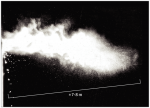[QUOTE
Remember that well CJ. I had a Donald Duck gas mask, and my older sister had a Minnie Mouse one.Had to wear them for aprox an hour a day to familiarise ourselves with them. What i remember most was the horrible rubbery taste it left in my mouth.Britain started to prepare for the Second World War at least a year before it actually started. The government expected the war to disrupt and threaten the lives of civilians left at home. Between 1938 and 1939, the government thought of all the possible dangers and difficulties the Home Front would face during war, and started to take precautions. People were encouraged to think about their safety, and the government spent a great deal of time educating people on what to do in situations such as an air raid, or a gas attack, as well as providing information on how to make rations stretch further and how to keep yourself healthy. By September 1939 some 38 million gas masks had been given out, house to house, to families in Britain. Actually, everyone in Britain was given a gas mask in a cardboard box, to protect them from gas bombs, which could be dropped during air raids. Posters reminded people to carry their gas mask at all times. People were fined if they were caught without their gas masks. There was a special gas mask for children .....and for babies.
And in 2020 Britain doesn't have enough PPE for medical workers!!!


